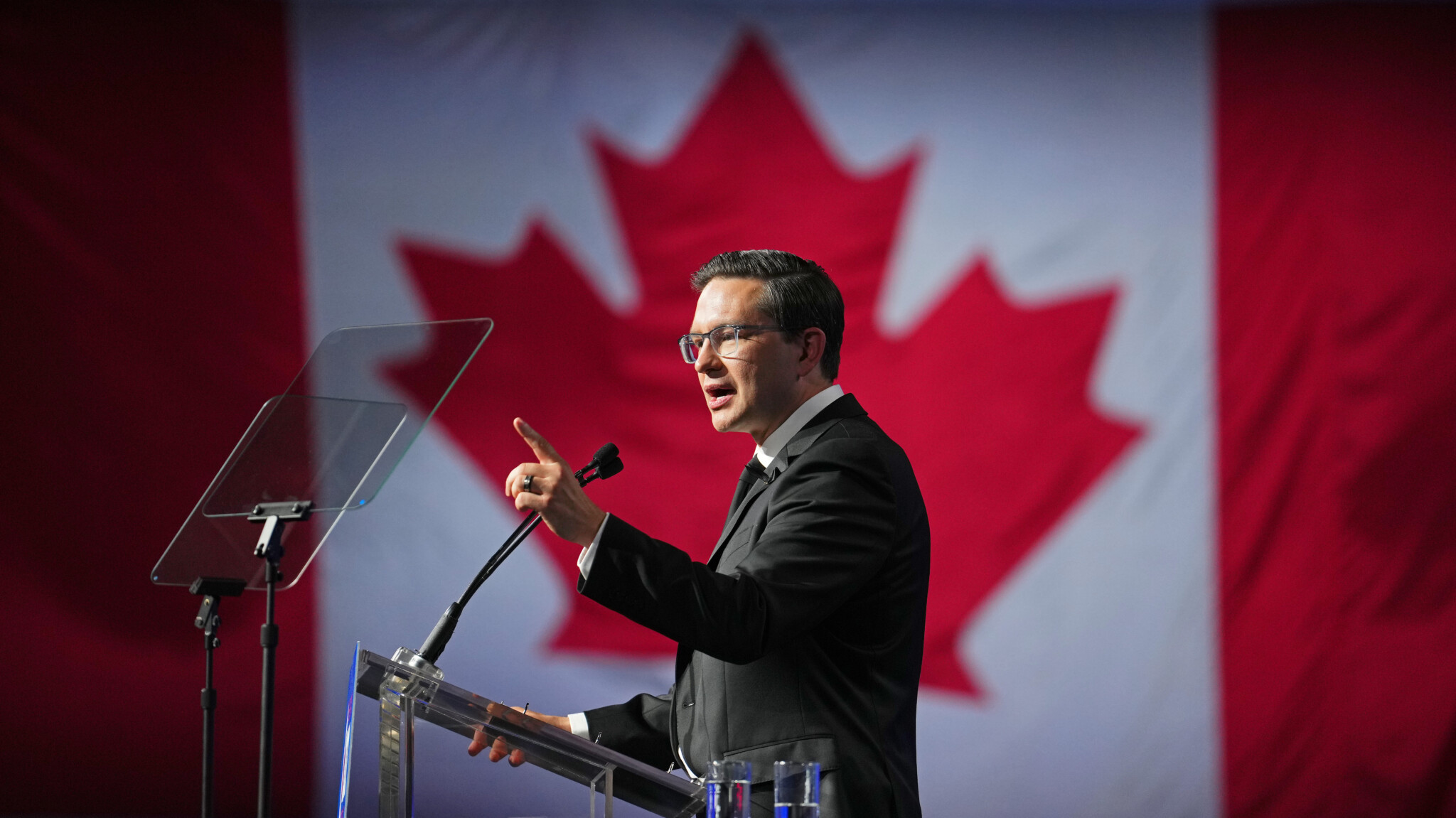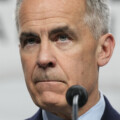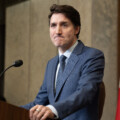Even if polls indicate that Canadians’ current political agitation is mostly motivated by economic concerns, there’s still a sense that there’s an underlying set of culture issues–what sometimes gets described as the “culture war”–that’s been at the backdrop of our politics over the past decade or so.
Culture bleeds into everything, including our economy and the shared spirit of Canada’s citizens. The Trudeau government has been happy to push its post-national narrative of the country, which rejects the historical and cultural concept of Canada and leaves nothing to be shared except some vague ideas and empty platitudes about how “diversity is our strength.”
It’s an inherently corrosive narrative made up of many moving parts. One of those is weakening Canada’s links with its past. Another is marginalizing the historic institutions that give it life.
If and when the Conservatives form the next government they’ll have to match their focus on strengthening Canada’s economy with a parallel commitment to pushback against Trudeau-era post-nationalism.
Take the recent decision in Alberta to rename the Fort Calgary historic site “The Confluence” to be more “inclusive.” Hub contributor Kelden Formosa correctly pointed out that the name change stripped it of anything unique to Calgary and made the important heritage grounds about as distinct as a condo development.
Or take another example from British Columbia, where the government is in the process of turning the Victoria’s Royal B.C. Museum (RBCM) into a historical apology instead of an institution of proper historical commemoration and engagement.
The RBCM once possessed some of the best immersive exhibits in Western Canada, including beautifully recreated 19th century B.C. towns and industry. Instead of maintaining them, the RBCM opted to disembowel them in the name of “inclusion.”
Within the museum’s galleries, representations of the “settlers” and the industries which were crucial to B.C.’s growth, like mining, logging, fishing, and agriculture are now framed in a villainous light. Bear in mind, these industries were where some of Canada’s first Punjabi and Chinese immigrants found work alongside Indigenous peoples and Europeans.
There was an opportunity to tell a more comprehensive story at the provincially funded RBCM without crudely dividing Canadians into “settlers” and “Indigenous,” which is nothing more than a progressive rebranding of “Cowboys and Indians.” Beyond ritually humiliating “settlers” upon their arrival in the exhibit, this sort of narrative has wider effects.

An exhibit from the third floor of B.C. Royal Museum is pictured in Victoria, Wednesday, December 29, 2021. The museum announced that it will be closing the third floor including parts of the First Peoples Gallery in an effort to decolonize the institution. Jonathan Hayward/The Canadian Press
In light of these trends, what can Conservatives do?
Museums and similar sites could be offered new institutional funding or grants to upgrade their facilities on the condition that they put forward a positive and historically accurate narrative of Canada in their programming. This needn’t necessitate a propagandistic project, either. It must simply be one that recognizes the value in telling the full story, the bad and the mostly good, that has shaped our nation into the successful and exemplary place it is today.
How museums choose to construct that narrative need not be fully dictated by the federal government, but the baseline should be that Canada’s existence is a good thing, and the country has largely found itself on the right side of history. The funding should be generous, long-term, and come with terms that are strict and, if possible, unalterable, so any government that may replace a Conservative one cannot meddle with the obligations.
Other recipients of these funds could be the various community groups that help to run historic sites across Canada. The Friends of Fort York, who help manage Toronto’s Fort York historic site, saw municipal grants for their student program withdrawn in 2022 due to a lack of DEI bonafides.
Toronto’s municipal government thought renaming Yonge-Dundas Square was a good idea, so it is probably too much to expect them to responsibly manage or reckon with historic sites, let alone decrepit public squares.
A Conservative government could relieve them of that responsibility and offer a much larger grant in its place for the Friends of Fort York, enabling their work to be bigger and better. The War of 1812 was a defining conflict for the small colonies that one day became Canada, and Canadians deserve to know about it.
Various funds or grants could also be distributed for the construction of new statues and monuments to replace those torn down by mobs or removed by timid local governments.
Provided they are well made, statues beautify places and remind residents of the real people who built the foundations of the country we live in. A good statue of a great person is the antithesis to post-nationalism, which is embodied by the lifeless, shapeless, and often meaningless abstract art pieces polluting the landscapes of many Canadian cities.
Nobody should be under the impression that decisions inspired by post-nationalism or done in the name of “inclusion” are popular.
The Royal B.C. Museum’s decision to gut its beloved galleries was widely panned across Canada, as was Toronto’s decision to rename Yonge-Dundas Square. Neither fall under federal jurisdiction, but they exemplify an encouraged attitude that is implicitly hostile to Canada and its history and needs to be stamped out wherever possible.
There is much to be undone from the past ten largely unpleasant years. Canada Day fireworks celebrations are no longer hosted by the federally-funded Port of Vancouver, for example. The new lyrics that made “O Canada” gender-neutral are grammatically inaccurate, horrific to listen to and another example of this Liberal government’s love of making headlines without any worthy substance. If restoring the older lyrics is off the table, replacing the lazy “In all of us command” with a lyric befitting the style of the anthem, like “In all thy souls command,” would be a welcome correction.
Making “O Canada” sound nice again or once again funding fireworks celebrations on July 1st that are worthy of the country’s birthday would be great first steps, but we need much more than that. The Conservatives need a year-round, muscular cultural policy that is active, aggressive, and interventionist. This could start with a bold appointment of a Canadian heritage minister who is actually viewed as a senior member of the cabinet.
There will be major pushback from the usual suspects at university faculty lounges and in the opinion pages of newspapers like the Toronto Star, but the Conservatives and their supporters must stand their ground. This is not the 1980s anymore, when wokeness hadn’t yet reared its ugly head. Conservative attitudes toward the role of government and crafting national culture need to change.
If someone constantly strove to focus only on their past mistakes and embarrassments, they would lead a very miserable life, possibly even going insane. That is exactly what Canada has been inflicting on itself for nearly a decade, with the federal government’s full backing.
There are certainly more effective and creative ways to fight the culture war than those suggested here, but fighting back against post-nationalism or the “woke” vandalism of Canada is a task that only a Conservative government can undertake.
Given the current atmosphere of progressive politics, there should be no expectation that the Liberals or NDP will abandon post-nationalism. If the Conservatives will not fight the culture war with a will to win, they may as well just embrace post-nationalism themselves.
Get The Hub’s latest news and commentary on WhatsApp. Click here.









